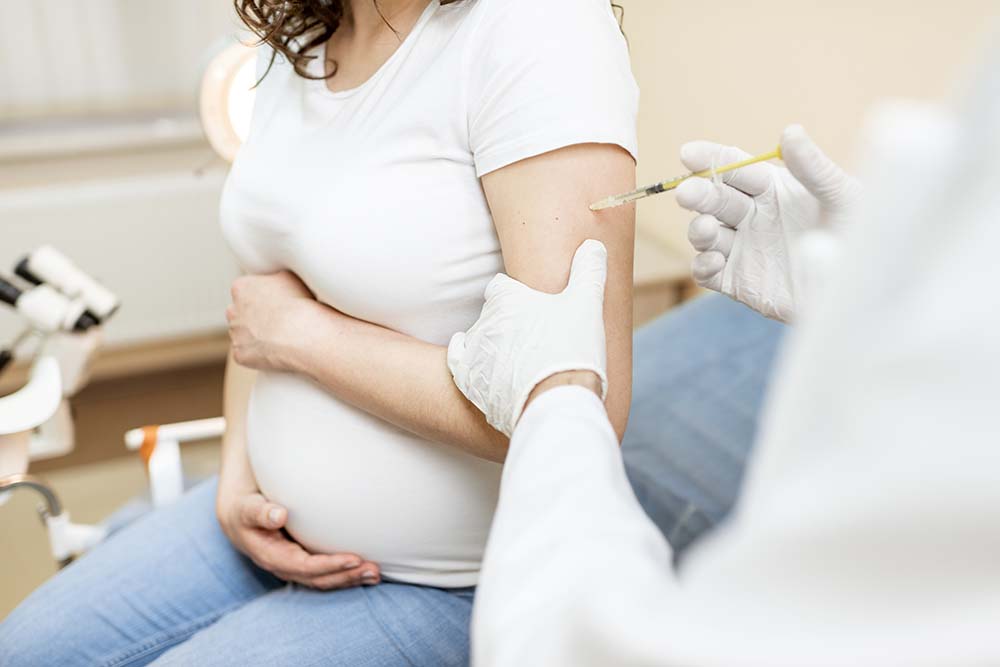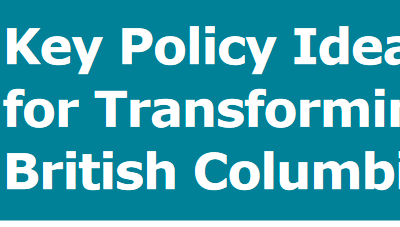In essence, Bill Gates is in charge of the world’s health. The application of his massive wealth, and his rallying of others to do the same, puts him in an unparalleled position of impact. However, his influence is enormous enough that it may muffle the scrutiny he would otherwise receive. Gates’ philanthropy on health care is driven by his perspective that population control is key. His integral role in the funding of WHO is cause for concern because of that organization’s long association with the development of abortive vaccines even before Gates’ influence came to apply. It is important that national governments and watchdog groups provide extensive independent assessment of Gates-sponsored vaccines, especially through WHO, to ensure that they do not become covert means of contraception.

Source: https://www.vox.com/2015/6/10/8760199/gates-foundation-criticism.
“The media loves the Gates Foundation. These experts are more skeptical,” read the 2015 Vox article by Julia Belluz. Even then, the Bill and Melinda Gates Foundation was the largest philanthropic organization in the world, giving $42.9 billion annually. Much of this has been directed towards health initiatives. The foundation helped set up the GAVI Alliance to boost immunization rates, and also the Institute of Health Metrics and Evaluation to evaluate the impact of vaccines and cancer screening. The foundation is also a large contributor to the Global Fund, which finances the treatment and prevention of infectious diseases.1
“You may have foundations with assets larger than almost 70 percent of the world’s nations making decisions about public policy and public priorities,” Georgetown Public Policy Institute’s Pablo Eisenberg told Nature, “without any public discussion or political process.”2
Over the two-year period of 2018-19, the Bill and Melinda Gates Foundation was only the second-largest funder of WHO at USD $531 million. This was more than the U.K. contribution of $392 million, and second only to the United States at $873 million.3 The United States has halted its funding of WHO as it reviews the wisdom of its massive annual contributions,4 making Gates’ contribution all the more valuable.
Population control has always been a fixation for Gates, whose father was once on the board for Planned Parenthood in Seattle. His equation is health = resources / people.5 He counts the earth’s resources as relatively fixed, which means the only way the health of the average person can grow is if there are fewer of us. Gates says that wherever child mortality rates fall to less than one percent, women choose to have fewer babies. The healthier babies are, the fewer children women will choose to have—a tenuous proposition at best.
On May 5, 2009, Bill Gates called a meeting in Manhattan with a “Good Club” of fellow billionaires.6 Gates impressed the need to curb world overpopulation with George Soros, Oprah Winfrey, David Rockefeller, Warren Buffett, Ted Turner, Michael Bloomberg,7 and Eli and Edyth Broad, whose combined wealth was $125 billion.
According to Times Online, the group “discussed joining forces to overcome political and religious obstacles to change.”8 An anonymous attendee told the paper, “They need to be independent of government agencies, which are unable to head off the disaster we all see looming,” and added, “They wanted to speak rich to rich without worrying anything they said would end up in the newspapers, painting them as an alternative world government.”
The Guardian reported that the billionaires agreed to tackle population growth as a threat to industry, society, and the environment.9 Gates’ Ted Talk in 2010 was certainly in this vein. He warned that too many living people would endanger the earth due to carbon emissions. He explained, “The world today has 6.8 billion people. That’s headed up to about nine billion. Now, if we do a really great job on new vaccines, health care, reproductive health services, we could lower that by, perhaps, 10 or 15 percent.”10
All three components that Gates mentioned can involve direct forms of population control. “Reproductive health” is a euphemism for contraception and abortion. By now “health care” includes an increasingly wide scope for euthanasia, including in Canada. Contraceptive (or more literally, abortive) vaccines also exist, meaning that the use of vaccinations for more direct population control is at least a possibility.
In 1972, WHO launched a Special Programme of Research, Development, and Research Training in Human Reproduction to promote, co-ordinate, support, conduct, and evaluate such research with developing countries in mind.11 Abortive vaccines were developed as a result. Currently, a search of “contraceptive vaccines” on PubMed produces 62 studies.12
Abortive vaccines work by turning the immune system of females against their own pregnancy hormone, human chorionic gonadotropin (hCG). When a woman carries enough antibodies against hCG, embryos will either fail to adhere to the uterine wall or miscarry. Dr. Gursaran Prasad Talwar, founder of India’s National Institute of Immunology in India reported in 1976 that a vaccine against a combined hCG and tetanus toxoid achieved the desired results.13
In June of 1988, the Lancet report, “Nigeria: A Well-Meaning But Controversial Population Policy,”14 said that Nigerian women so feared vaccines that they hid in the bushes when vaccination campaigns came to local areas. That same month, Lancet documented the “Phase I clinical trial of a World Health Organisation birth control vaccine.”15 Scientists determined that vaccines given to marmosets and baboons were “blocking fertility at an early stage of pregnancy with no discernible alterations in the menstrual cycles. This method, therefore, could be a highly acceptable birth control strategy in both developed and developing countries.”
By 1993, the WHO program on reproductive health research had spent $356 million. Much of this came from donations by national governments, the World Bank, Rockefeller Foundation, and Ford Foundation.16 In that same year, a paper published in FASEB journal17 updated progress on contraceptive vaccines, while suggesting where they should be implemented.
We conclude from our results that both the efficacy and safety of the WHO vaccine are not yet ensured.
During the next decade, the world’s population is set to rise by around 500 million. Moreover, because the rates of population growth in the developing countries of Africa, South America, and Asia will be so much greater than the rest of the world, the distribution of this dramatic population growth will be uneven.
Vaccines aren’t developed cheaply and require a market. There are some indications that abortive vaccines have been administered without proper consent in the very regions identified as being ideal target zones.
In October of 1994, Comite Pro Vida de Mexico (CPVM) was suspicious of a WHO tetanus vaccine campaign that called for repeated vaccinations but only for women of child-bearing years.18
CPVM acquired several vials of the anti-tetanus shots administered and found hCG in some of them. The pro-life group Human Life International found out that similar campaigns targeting women aged 15-45 had occurred in the Philippines, and aged 12-49 in Nicaragua. These tetanus campaigns called for repeated inoculations. This process is not necessary to handle tetanus, which has ten years of immunity in each dose, but it is necessary to raise antibodies against hCG. Also suspect was the fact that males were ignored in this campaign, even though they are as vulnerable to tetanus as females.19
Dr. Vilma Gonzales miscarried two times after receiving a tetanus vaccine. Her suspicions were raised, then confirmed when her blood tested with high amounts of anti-hCG antibodies. In 1995, she told the BBC,
Women should have been told that the injection would cause miscarriage and, in the end, infertility. The Department of Health should have asked beforehand so that only those who didn’t want to have children had the injection. I really hope and pray to God that I will still have a baby and get a normal pregnancy. And I am still hopeful that the Department of Health will find an antidote to the antibodies as well.20
Tests by the Philippine Medical Association found hCG in 9 of 47 vials of tetanus shots, ranging from 0.19 mU/ml to 3.0 mU/ml. Most were labelled as coming from Canada as part of a WHO-sponsored program.21
In 1996, Ohio State researcher Dr. Vernon Stevens determined that hCG vaccines inhibited fertility in humans and other primates, with “no serious side effects . . . revealed to date.” However, wide distribution was not possible due to “complexities in production, burdensome application procedures, the need for frequent booster immunizations or cost of manufacture.” Tests showed a shot could elevate rabbit antibodies for more than one year.22
By 1996, WHO had parted ways with Dr. Talwar,23 who over a 20 year period had found himself in endless controversies. His contraceptive vaccine used a longer segment of the hCG molecule than others, bringing a potential risk of further side effects, due to the similarities these added sequences had to other hormones. Dr. Talwar never found any such side effects, but WHO cut off his funding anyway, only to have it picked up by the Ottawa-based International Development Research Center (IDRC).24
In 2014, Catholic doctors in Kenya accused the WHO of using tetanus vaccines there as a covert sterilization effort. In March of that year, three accredited independent labs in Nairobi found hCG in the vaccine samples where none should have been. The following October, 6 vials were found and sent to six independent labs. The hCG was found in half of the samples. Subsequent tests by Nairobi’s AgriQ Quest laboratory, in two sets of analyses, found hCG again in the same vials that they had been found in previously. Researchers in the Open Access Library Journal concluded, “[O]ur opinion is that the Kenya ‘anti-tetanus’ campaign was reasonably called into question by the Kenya Catholic Doctors Association as a front for population growth reduction.”25
In recent years, efforts have been made for vaccines that would prevent sperm and egg from being produced. These use the immune system to neutralize the gonadotropin releasing hormone (GnRH) secreted by the hypothalamus. Attempts have been made to use recombinant DNA to produce the vaccine, a process that could be more cost-effective than chemically conjugated GnRH-based vaccines .26
When Matthew Herper wrote about Bill Gates and vaccines for Forbes in 2011, he said, “Here’s the truest definition of power: When you have the ability to not just solve a problem but also to create a sustainable market that addresses it.” Gates has that power. And, as his discussions with billionaires in 2009 showed, he wants to overcome political and religious barriers to population control efforts. Given that Gates rules by wealth and not an election, it is important that nations and watchdog groups overcome that democratic deficit. The Gates Foundation and the WHO deserve public scrutiny.
Lee Harding is a research associate with the Frontier Centre for Public Policy.
[show_more more=”SeeEndnotes” less=”Close Endnotes”]
- Julia Belluz, “The Media Loves the Gates Foundation. These Experts Are More Skeptical.,” (Vox, June 10, 2015), https://www.vox.com/2015/6/10/8760199/gates-foundation-criticism.
- Meredith Wadman, “State of the Donation,” Nature 447, no. 7142 (May 2007): 248–50, https://doi.org/10.1038/447248a.
- “Trump And WHO: How Much Does The U.S. Give? What’s The Impact Of A Halt In Funding?,” NPR.org, April 15, 2020, https://www.npr.org/sections/goatsandsoda/2020/04/15/834666123/trump-and-who-how-much-does-the-u-s-give-whats-the-impact-of-a-halt-in-funding.
- “Trump Says He Will Halt WHO Funding, Pending Review,” NPR.org, April 14, 2020, https://www.npr.org/sections/coronavirus-live-updates/2020/04/14/834588506/trump-says-he-will-halt-who-funding-pending-review.
- Matthew Herper, “With Vaccines, Bill Gates Changes The World Again,” Forbes, July 28, 2012, https://www.forbes.com/sites/matthewherper/2011/11/02/the-second-coming-of-bill-gates/#1087ba1013fd.
- Paul Harris, “They’re Called the Good Club – and They Want to Save the World,” (The Guardian, May 30, 2009), https://www.theguardian.com/world/2009/may/31/new-york-billionaire-philanthropists.
- RUSSELL GOLDMAN, “Meeting of America’s Richest About ‘Need,’ Attendee Says,” ABC News (ABC News, May 19, 2009), https://abcnews.go.com/Business/story?id=7628545&page=1.
- “Billionaire Club in Bid to Curb Overpopulation – Global Research,” Times Online, May 25, 2009, https://www.globalresearch.ca/billionaire-club-in-bid-to-curb-overpopulation/13736.
- Paul Harris, “They’re Called the Good Club – and They Want to Save the World,” (The Guardian, May 30, 2009), https://www.theguardian.com/world/2009/may/31/new-york-billionaire-philanthropists.
- Bill Gates, “Transcript of ‘Innovating to Zero!,’” Ted.com (TED Talks, 2020), https://www.ted.com/talks/bill_gates_innovating_to_zero/transcript?language=en#t-279708.
- Benagiano G;Diczfalusy E, “Research on Human Reproduction and the United Nations,” South African Medical Journal = Suid-Afrikaanse Tydskrif Vir Geneeskunde 85, no. 5 (2012), https://pubmed.ncbi.nlm.nih.gov/7638687/#:~:text=The%20Special%20Programme%20of%20Research,the%20needs%20of%20developing%20countries.
- PubMed.gov, “Contraceptive Vaccine – PubMed – NCBI,” Nih.gov, 2011, https://www.ncbi.nlm.nih.gov/pubmed?orig_db=PubMed&cmd=Search&TransSchema=title&term=contraceptive+vaccine.
- G. P. Talwar et al., “Isoimmunization against Human Chorionic Gonadotropin with Conjugates of Processed Beta-Subunit of the Hormone and Tetanus Toxoid.,” Proceedings of the National Academy of Sciences 73, no. 1 (January 1, 1976): 218–22, https://doi.org/10.1073/pnas.73.1.218.
- “Nigeria A WELL-MEANING BUT CONTROVERSIAL POPULATION POLICY,” The Lancet 331, no. 8597 (June 1988): 1272–73, https://doi.org/10.1016/s0140-6736(88)92085-5.
- W R Jones et al., “Phase I Clinical Trial of a World Health Organisation Birth Control Vaccine,” Lancet (London, England) 1, no. 8598 (1988): 1295–98, https://doi.org/10.1016/s0140-6736(88)92117-4.
- Challenges in Reproductive Health Research, Biennial Report 1992-1993, World Health Organization, Geneva, 1994, p. 186.
- “Functional and Immunological Relevance of the COOH-Terminal Extension of Human Chorionic Gonadotropin Beta: Implications for the WHO Birth Control Vaccine,” The FASEB Journal, 1993, https://www.fasebj.org/doi/abs/10.1096/fasebj.7.14.7693535.
- “Tetanus Vaccine May Be Laced with Anti-Fertility Drug. International / Developing Countries,” Vaccine Weekly, 1995, 9–10, https://www.ncbi.nlm.nih.gov/pubmed/12346214.
- “Bad Blood in the Philippines? – PRI,” PRI, November 1996, https://www.pop.org/bad-blood-in-the-philippines/.
- British Broadcasting Corporation Horizon Series The Human Laboratory, 8 November 1995, as cited by “Bad Blood in the Philippines?” PRI, November 1996, https://www.pop.org/bad-blood-in-the-philippines/.
- “Bad Blood in the Philippines? – PRI,” PRI, November 1996, https://www.pop.org/bad-blood-in-the-philippines/.
- Vernon C. Stevens, “Progress in the Development of Human Chorionic Gonadotropin Antifertility Vaccines,” American Journal of Reproductive Immunology 35, no. 3 (March 1996): 148–55, https://doi.org/10.1111/j.1600-0897.1996.tb00024.x.
- Ibid
- K.S. Jayaraman, “India Forges Ahead with Contraceptive Vaccine,” Nature Medicine 1, no. 7 (July 1995): 609–10, https://doi.org/10.1038/nm0795-609b.
- Oller, John, Christopher A. Shaw, Lucija Tomljenovic, and Stephen K. Karanja. “(PDF) HCG Found in WHO Tetanus Vaccine in Kenya Raises Concern in the Developing World.” ResearchGate. October 2017. https://www.researchgate.net/publication/320641479_HCG_Found_in_WHO_Tetanus_Vaccine_in_Kenya_Raises_Concern_in_the_Developing_World.
- Gupta, Satish Kumar, Abhinav Shrestha, and Vidisha Minhas, “Milestones in Contraceptive Vaccines Development and Hurdles in Their Application,” Human Vaccines & Immunotherapeutics 10, no. 4 (November 21, 2013): 911–25, https://doi.org/10.4161/hv.27202.
[/show_more]



